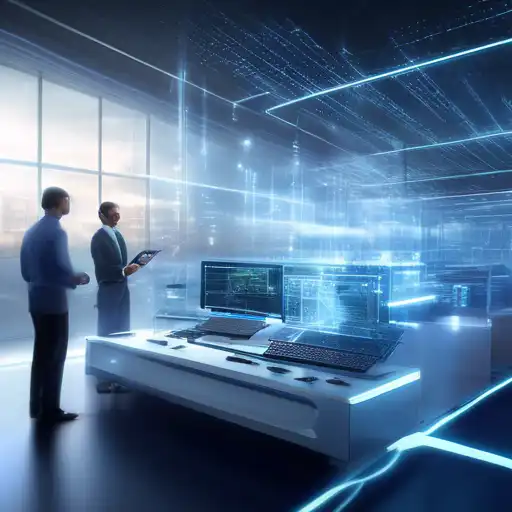Introduction to Edge Computing
In the digital age, speed and efficiency are paramount. Edge computing emerges as a transformative technology that processes data closer to its source, significantly reducing latency and bandwidth use. This article delves into how edge computing is setting new standards for data processing and what it means for businesses and consumers alike.
What is Edge Computing?
Edge computing is a distributed computing paradigm that brings computation and data storage closer to the location where it is needed, to improve response times and save bandwidth. Unlike traditional cloud computing, which relies on centralized data centers, edge computing processes data at the edge of the network, near the source of the data.
Benefits of Edge Computing
The advantages of edge computing are manifold, including:
- Reduced latency: By processing data closer to the source, edge computing minimizes the delay in data transmission.
- Bandwidth savings: Local data processing reduces the amount of data that needs to be sent to the cloud, saving bandwidth.
- Enhanced security: Distributing data processing can reduce the risk of data breaches by limiting the exposure of sensitive information.
- Improved reliability: Edge computing can operate independently of the cloud, ensuring continuous operation even if connectivity is lost.
Edge Computing vs. Cloud Computing
While both edge computing and cloud computing play pivotal roles in the modern IT landscape, they serve different purposes. Cloud computing is ideal for processing large volumes of data that require significant computational power, whereas edge computing is optimized for speed and efficiency in localized data processing. Together, they form a complementary ecosystem that powers the next generation of digital services.
Applications of Edge Computing
Edge computing is revolutionizing industries by enabling real-time data processing. Key applications include:
- Internet of Things (IoT): Edge computing allows IoT devices to process data locally, enabling faster decision-making.
- Autonomous vehicles: Real-time data processing is critical for the safety and efficiency of self-driving cars.
- Smart cities: Edge computing supports the infrastructure of smart cities by processing data from sensors and devices in real time.
- Healthcare: Wearable devices and remote monitoring systems benefit from the immediate data processing capabilities of edge computing.
Challenges and Considerations
Despite its benefits, edge computing presents challenges such as the need for robust security measures, the complexity of managing distributed systems, and the initial cost of deployment. However, with careful planning and the right technology partners, these challenges can be effectively managed.
The Future of Edge Computing
As the demand for real-time processing grows, edge computing is poised to become an integral part of the digital infrastructure. With advancements in 5G technology and the proliferation of IoT devices, the potential for edge computing is limitless. Businesses that adopt edge computing today will be well-positioned to lead in the data-driven future.
For more insights into how edge computing is transforming industries, explore our cloud computing and IoT sections.
